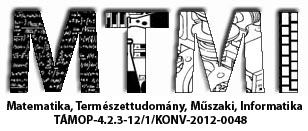Right Atrial Isthmus Ablation Using Contact Force Measurement: Clinical Validation Of a New Concept
Előadás adatai
Authors: Salimi Mohammad, Gabor Sandorfi, Istvan Edes, Zoltan Csanadi,
Abstract
Background:The mechanism of typical atrial flutter (AFL) is a macroreentry confined to the right atrium. The critical isthmus of this reentrant circuit is between the Inferior Caval Vein (ICV) and the ventricular aspect of the tricuspid ring, an area called cavotricuspid isthmus (CTI). Radiofrequency (RF) ablation of the CTI is considered as first-line therapy with excellent long-term outcome. We investigated the utility of a new ablation catheter capable of measuring catheter tissue contact during ablation and a novel ablation strategy with the duration of RF delivery according to the contact force achieved.
Methods: 37 patients were enrolled. The Biotronik TactiCath® which is the first force sensing ablation catheter providing the real time contact force in gram and the force time integral (FTI) in the force multiplied by ablation duration in gs, during ablation. RF was delivered at each ablation site to achieve a minimum FTI of 1000 gs. Effect of energy delivery on the underlying tissue was assessed by the change in the amplitude of local electrogram. RF deliveries were 4-5 mms apart along a straight line on the CTI as followed on the X-ray screen and by a 3D electroanatomical mapping system (EAMS), until bidirectional block was achieved.
Results: 37 patients (28 male, 76%), age 62,6±9,74 years. 16 patients (43%) were in sinus rhythm, 21 patients (57%) were in atrial flutter at start of ablation. Bidirectional block was achieved in all patients. The mean ablation number/patient was 7±3,46, while the mean RF delivery time 5,37±3,02 minute with no significant difference between ablations performed during sinus rhythm versus AFL (8,38±3,54; 5,7±2,8 minute and 5,95±3,09; 5,12±3,22 minute, respectively). At least a 50 % decrease in the atrial amplitude was achieved in 82 % of ablations which reached 1000 gs of FTI.
Discussion: The new catheter capable of contact force measurement is feasible for atrial flutter ablation either in sinus rhythm or in ongoing flutter. RF delivery to FTI of 1000 gs results in sufficient tissue effect in the majority of cases.
Támogatók: Támogatók: Az NTP-TDK-14-0007 számú, A Debreceni Egyetem ÁOK TDK tevékenység népszerűsítése helyi konferencia keretében, az NTP-TDK-14-0006 számú, A Debreceni Egyetem Népegészségügyi Karán folyó Tudományos Diákköri kutatások támogatása, NTP-HHTDK-15-0011-es A Debreceni Egyetem ÁOK TDK tevékenység népszerűsítése 2016. évi helyi konferencia keretében, valamint a NTP-HHTDK-15-0057-es számú, A Debreceni Egyetem Népegészségügyi Karán folyó Tudományos Diákköri kutatások támogatása című pályázatokhoz kapcsolódóan az Emberi Erőforrás Támogatáskezelő, az Emberi Erőforrások Minisztériuma, az Oktatáskutató és Fejlesztő Intézet és a Nemzeti Tehetség Program



